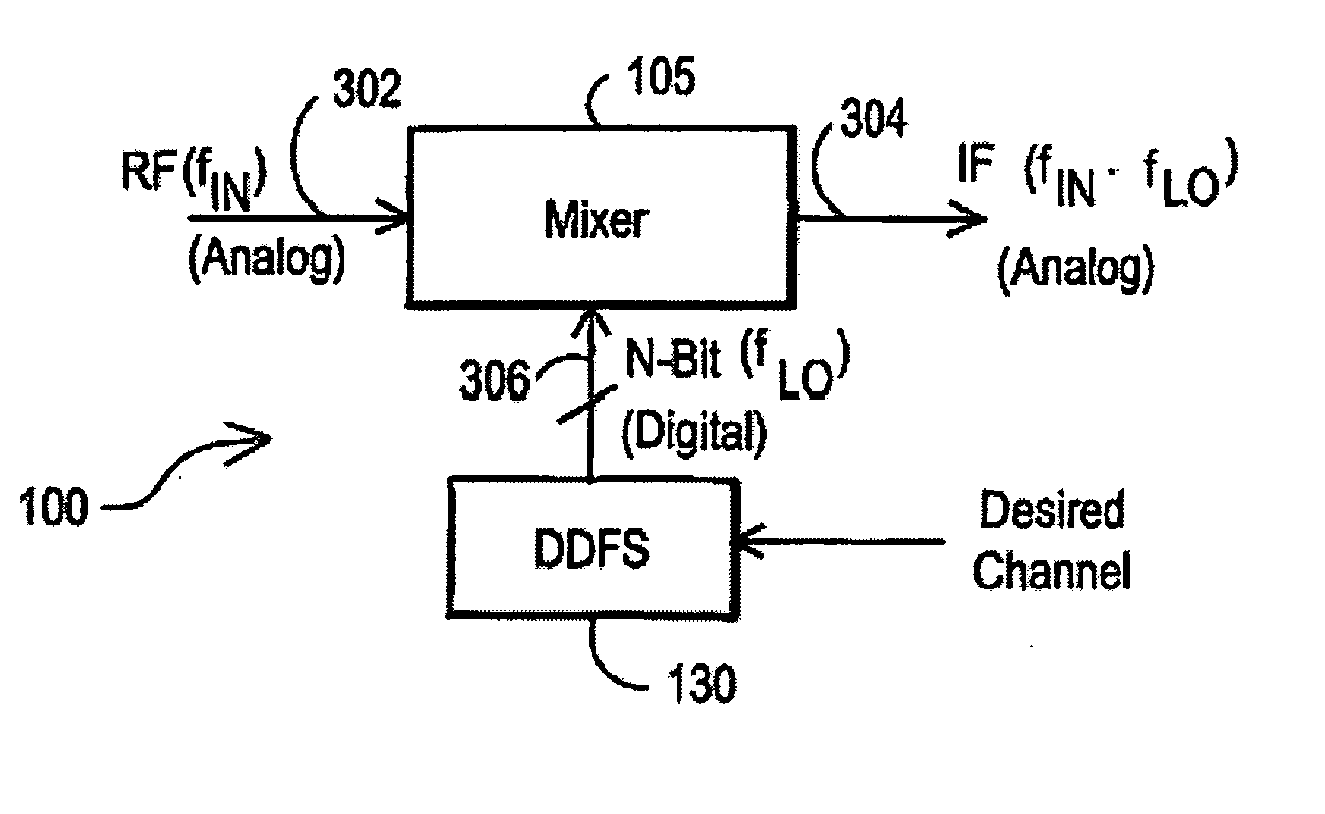Television receiver suitable for multi-standard operation and method therefor
a television receiver and multi-standard technology, applied in the field of television receivers, can solve problems such as limited use of low-frequency applications
- Summary
- Abstract
- Description
- Claims
- Application Information
AI Technical Summary
Problems solved by technology
Method used
Image
Examples
implementation example
[0058] Television Implementation Example
[0059] The majority of television tuners used today are discrete single conversion tuners. Typical television tuners have inputs for receiving a radio frequency (RF) signals from an antenna or cable source having channels in the range of 48 megahertz (MHz) to 870 MHz. A tracking bandpass filter is often used to receive the RF INPUT signal and to attenuate undesired channel energy in order to provide a filtered signal to an input of a low noise amplifier (LNA). An RF synthesizer is often used to control a variable local oscillator (LO) provide a mixing signal in the range of 95 to 911 MHz. The mixing signal is combined with the output of the LNA in a mixer, which mixes the desired channel to an intermediate frequency (IF) of 44 MHz. The output of the mixer is then amplified in a programmable gain amplifier (PGA) and is filtered in an IF filter having a center frequency at the conventional IF of 44 MHz and having a passband of 6 MHz. Thus the IF...
embodiment 850
[0089]FIG. 8B is a block diagram for an embodiment 850 including an integrated circuit 802 that includes tuners for multiple radio bands, and each of these tuners utilize the tuner circuitry of the present invention. For example, integrated circuit 802 includes an AM tuner 852, FM tuner 854, and any other desired radio band as represented by tuner 856. As shown, the AM tuner 852 receives an RF input signal from antenna 858 and utilizes in part tuner 100A, according to the present invention, to generate tuned AM signals. The FM tuner 854 receives an RF input signal from antenna 862 and utilizes in part tuner 100B, according to the present invention, to generate tuned FM signals. And the other band tuner 856 receives an RF input signal from antenna 860 and utilizes in part tuner 100C, according to the present invention, to generate tuned signals in the other desired band. The different tuners 852, 854 and 856 can also use digital clock signals 808, 810 and 814 from a clock control cir...
PUM
 Login to View More
Login to View More Abstract
Description
Claims
Application Information
 Login to View More
Login to View More - R&D
- Intellectual Property
- Life Sciences
- Materials
- Tech Scout
- Unparalleled Data Quality
- Higher Quality Content
- 60% Fewer Hallucinations
Browse by: Latest US Patents, China's latest patents, Technical Efficacy Thesaurus, Application Domain, Technology Topic, Popular Technical Reports.
© 2025 PatSnap. All rights reserved.Legal|Privacy policy|Modern Slavery Act Transparency Statement|Sitemap|About US| Contact US: help@patsnap.com



